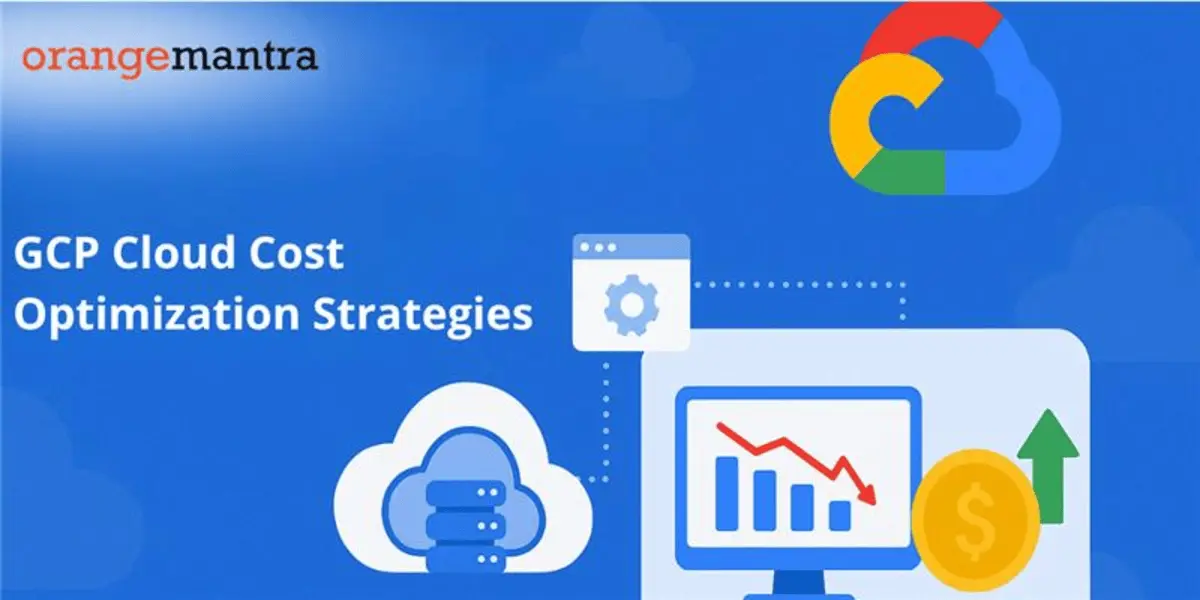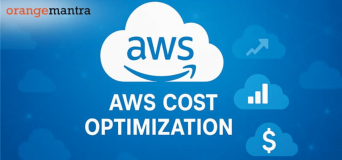
Cut cloud costs without compromising performance! Explore GCP Cloud cost optimization techniques, best practices, and expert tips for smarter cloud management.
Here’s what you will learn:
If your business relies on the cloud to stay agile, scalable, and innovative, you’re not alone. Cloud platforms have become the backbone of modern digital operations, empowering everything from data analytics to AI-driven automation. And when it comes to flexibility, GCP Cloud cost optimization, and the use of trending tools, Google Cloud Platform (GCP) is often a top choice for many enterprises.
But here’s the catch—as your workloads grow in GCP, so can your cloud bill. Many organizations quickly realize that managing and optimizing those costs isn’t as simple as it seems. That’s where GCP Cloud Cost Optimization comes in.
In simple terms, it’s the process of keeping your cloud spending under control while making sure your systems still perform at their best. It’s not just about trimming expenses; it’s about getting the maximum value from every dollar you invest in Google Cloud.
Now before you go deep into different aspects of google cloud platforms, you need to
Table of Contents
Let’s take a glance at the current GCP Cost Optimization
According to Statista, in 2025, 69% of organizations worldwide prioritize cloud cost optimization as a key aspect of their cloud strategy. Google Cloud continues to secure a significant market position, generating over $43 billion in revenue in 2024 and representing about 12% of the global cloud infrastructure market.
Real-World Cost Optimization Outcomes
Forbes, after migrating its publishing infrastructure to Google Cloud and automating deployments, reduced regression and deployment time by 58% and saved 50 hours of expert efficiency per week, illustrating major efficiency and cost savings through automation.
OpenX, another major GCP user, achieved a 60% reduction in per-unit cloud costs and reduced time-to-market for new features by over 50% in 9 months using advanced cloud cost frameworks and continuous optimization practices.
These examples clearly demonstrate that with the right GCP optimization strategies, organizations can turn cloud cost management into a competitive advantage.
GCP Cloud Cost Optimization: A Brief Introduction
GCP cost optimization is an organized method of reducing unwarranted cloud expenditure without affecting the applications. It is an assessment of your resource utilization and distribution, patterns of resource usage, and resource pricing to be cost-effective in all your Google Clouds.
GCP cloud solutions aim at balancing cost, performance, and scalability. It enables teams to understand GCP billing, find unutilized resources, and use price cuts to maintain an affordable budget.
Why GCP Cost Optimization is Crucial for Businesses?
With an increase in the workloads of organizations, the complexity of controlling instances, storage, and network costs is also increasing. The costs of clouds might even get out of control unless they are monitored properly.
Unless the businesses have appropriate cloud cost control, they are likely to end up spending 20-40 percent more on unused or over-provisioned resources.
Why GCP Cloud Cost Optimization Matters to Your Business?
When done right, GCP cost optimization implementation doesn’t just lower your bills; it brings clarity, control, and long-term sustainability to your entire cloud ecosystem.
Here’s what it truly helps you achieve:
Predictable Budgets
No more unexpected billing surprises at the end of the month. With effective cost optimization, you gain full visibility into where your cloud spend is going. You can set up alerts, track usage patterns, and forecast expenses accurately. This way, your finance and tech teams can plan confidently and align budgets with real business priorities.
Better ROI
Cloud optimization isn’t about spending less, it’s about spending smartly. By identifying underutilized or redundant resources, you ensure that every dollar goes toward high-impact workloads that actually drive business outcomes. The result? A stronger return on investment (ROI) and better overall performance.
Operational Agility
Scalability is one of GCP’s biggest advantages, and optimization helps you make the most of it. When you right-size resources and automate scaling based on real-time demand, you can maintain top performance without overpaying. Your infrastructure becomes more flexible, responsive, and cost-efficient simultaneously.
Sustainability and Responsible Resource Usagee
Cost optimization also supports a more responsible approach to cloud usage. By minimizing idle resources and improving efficiency, your organization reduces both energy consumption and its carbon footprint.
Key Factors that Affect GCP Cloud Costs
To manage costs at GCP, it is important to know what their motivation is. Here are some major contributors to the unwanted costs:
Compute Engine Usage: VM instances can be the highest expenditure on the cloud. Unutilized or overutilized instances may consume a lot of budgets.
Storage and Network Costs: Data storage, data transfer, or data access has a significant impact on GCP billing.
Data Egress Charges: The flow of data between geographical areas or other networks may raise the cost of operation.
Unproductive Resources: Resources such as unattached disks or dormant IP addresses are charged.
Licensing and Add-ons: The integration of third parties, APIs, and specific tools may add to the GCP cost.
You can identify these factors at an early stage to help organizations establish a base for smarter GCP optimization policies and cloud migration services to improve performance.
Proven GCP Cloud Cost Optimization Strategies
The following are practical measures that can enable you to learn how to manage Google Cloud costs and make your investment more efficient and sustainable.
1. Use Committed Use Discounts (CUDs) and Sustained Use Discounts (SUDs)
GCP has automatic Sustained Use Discounts and pre-purchased Committed Use Discounts that can save up to 57% on the regular workloads. One of the principles of GCP cloud cost optimization is to plan the workload around these discounts.
2. Right-size Compute Instances
Periodically examine the performance and utilization trends of VM. Monetizing or modernizing instances according to the demand is a way to make sure that you are paying just what you require and no more, no less.
3. Automate Idle Resource Management
Auto-shut down idle VMs, delete unneeded snapshots, and free IPs. The adoption of automation is a feasible cloud cost control mechanism that will save thousands of dollars every year.
4. Take Advantage of Preemptible VM’s for Short-term Jobs
Preemptible VMs are up to 80 percent cheaper than regular instances and are optimal when one needs to batch-process a large workload or doesn’t need the critical response of regular instances.
5. Implement Resource Labels and Budgets
Resource tagging facilitates department or project resource tracking. Add this to budget alerts to receive warning messages about the possible GCP billing overruns.
6. Adopt GCP’s Recommender and Cost Tools
Recommender is an automatic tool of Google Cloud where it identifies idle resources, offers optimization recommendations, and guides your infrastructure in line with business objectives.
7. Optimize Storage Tiers Based on Usage
Select an appropriate storage service for Standard, Nearline, or Coldline depending on the frequency of use. This refinement can reduce the cost of GCP significantly.
8. Monitor Costs Using GCP Cloud Billing Reports
Periodically scrutinizing detailed GCP billing reports keeps one aware of the patterns of spending and also makes teams accountable.
GCP Cost Optimization Tools You Should Know
The appropriate tools are needed in cost management. The following are solutions that cannot be left out of GCP cloud cost optimization:
Google Cloud Recommender: Google Cloud Recommender automatically detects these low-utilization instances and suggests downsizing or shutting them off. Acting on this recommendation could instantly cut your monthly cloud bill by 20–30%, without impacting performance.
Billing Reports & Budgets: Provides analytical details of GCP billing transparency.
Cost Table Reports: Helps visualize monthly or project-based spending to aid in planning.
Third-party Tools: Monitoring and scaling Solutions such as Cloud Health, Spot.io, and Densify can be used with GCP to automate scaling and monitoring, and they are essential to large-scale cloud cost management.
These tools help in making the complicated process of optimizing GCP identification, following, and implementing effective strategies easier.
Best Practices for Long-Term GCP Cost Management
To be successful in the long run using Google cloud cost management, companies must adopt sustainable cost governance models:
Constant check-ups: Just as regular checkups catch issues before they become costly, continuous monitoring of your GCP usage identifies inefficiencies early, such as idle storage or oversized servers, so you can take corrective action immediately and prevent unnecessary spending.
Resource Tagging: Be sure that all assets are tracked and billed properly.
Budget Alerts and Policy Implementation: Establish pre-determined spending.
Training of Teams: Train teams on GCP pricing and responsible usage.
Implement FinOps: This means applying FinOps solutions to coordinate financial accountability and engineering activities.
These best practices can develop a cost-conscious culture so that GCP cloud cost optimization is the norm rather than the response.
Common Mistakes to Avoid in GCP Cost Optimization
Even more experienced teams err in the management of cloud costs.
- Failure to use Committed or Sustained Use Discounts.
- Failing to take note of idle or oversized resources.
- Lack of regular review of GCP billing reports.
- Failure to automate cloud cost controls.
- Avoid the place of adequate monitoring tools and DevOps optimization.
A proactive strategy on detection and correction of these problems will make sure that your cost optimization strategy is providing the same results every time.
How GCP Cost Optimization Services Can Help Your Business
Although personal approaches would provide marginal savings, collaborating with professionals in GCP cost optimization would make your victory sooner. A professional team can:
- Probe current cloud deployments and identify unidentified inefficiencies.
- Introduce automated scaling and GCP optimization measures.
- Real-time Google Cloud cost management with customized budgets and alerts.
- Provision of strategic guidance using cloud consulting services and business best practices.
- Having qualified GCP experts direct you on the process, you will be able to concentrate on innovation, and your costs will be predictable and optimized.
Concluding Thoughts
Cost management is not only related to cost reduction but also to developing more intelligent and efficient infrastructure that can grow with your business requirements. Companies are able to transform uncertain spending into strategic investment through GCP cost optimization.
We have learned the importance of knowing your GCP pricing model, searching for main cost drivers, and applying tools such as Google Cloud Recommender or the GCP billing details reports to quantify the difference.
The continuity aspect of cloud monitoring, budget alarms, and the spirit of FinOps that keeps your technical and financial teams focused is the key to long-term success of your cloud strategy. Optimization does not only minimize costs, as real-life examples such as Forbes and OpenX have shown, but also enhance performance, efficiency, and innovation rate.
When you are willing to get your cloud spend to work harder in the interests of your business, it is high time that proactive action is taken. Our GCP cloud cost optimization experts would be happy to evaluate, automate, and optimize your environment to make the most out of ROI.
At orangemantra, we as a trusted GCP partner offer you the best pricing for GCP models if you are planning to build cloud platforms on Google. The trick is in the constant visibility, automation, and intelligent embracing of GCP optimization strategies that suit your business.




